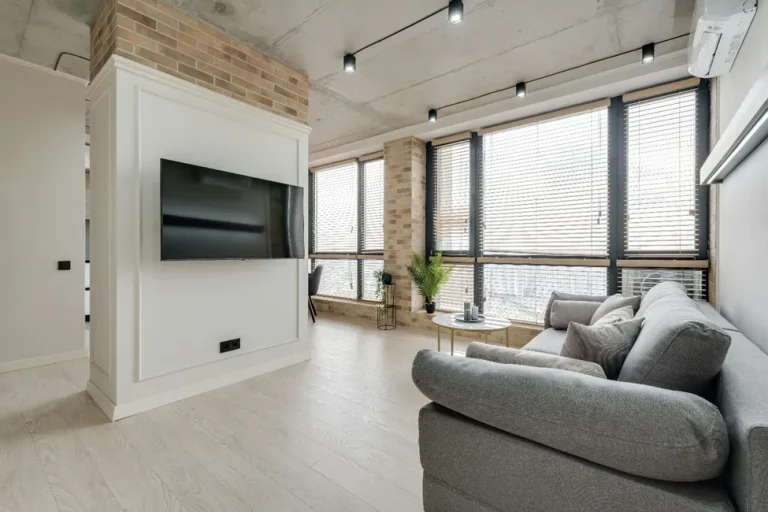Color Selection Tips for Installing High-Quality Siding

Siding color choices shape home appearance for decades after installation completion. Wrong color decisions create regret that lasts until the next renovation cycle. Homeowners often underestimate how color selection impacts property aesthetics and neighborhood integration. Color psychology influences both personal satisfaction and potential buyer appeal when homes enter real estate markets.
Light wavelengths interact differently with various siding materials during manufacturing processes.Installing high-quality siding requires careful color planning that considers multiple aesthetic and practical factors. Let’s explore strategic approaches to siding color selection that create lasting satisfaction.
Architectural Style Compatibility Guidelines
Colonial homes benefit from traditional color palettes that honor historical design principles without appearing outdated. Earth tones complement brick accents while maintaining classic appeal across different lighting conditions. Contemporary architectural styles accommodate bolder color expressions that reflect modern design sensibilities.
Ranch-style homes work well with horizontal color emphasis that enhances their natural low-profile characteristics. Color blocking techniques can create visual interest on large wall surfaces common in ranch designs. Architectural elements like shutters and trim provide opportunities for accent colors that complement primary siding selections.
Climate and Fade Resistance Considerations
Kentucky sun exposure varies significantly between north-facing and south-facing wall surfaces throughout different seasons. Darker colors absorb more heat energy, potentially affecting interior comfort and cooling costs during summer months. Light-colored siding reflects solar radiation while maintaining cooler surface temperatures.
UV stability ratings differ among color formulations within the same siding product lines from manufacturers. Red and blue pigments typically demonstrate superior fade resistance compared to yellow-based color mixtures. Professional color consultations help identify formulations engineered for extended color retention.
Neighborhood Harmony Without Conformity
Successful color choices complement surrounding homes without creating monotonous uniformity throughout residential areas. Subtle variation maintains neighborhood character while expressing individual preferences through tasteful color selections. Homeowner association guidelines may restrict certain color ranges or require approval processes.
Property values benefit from cohesive neighborhood aesthetics that avoid jarring color contrasts between adjacent homes. Neutral base colors provide flexibility for accent color changes through shutters, doors, and landscape elements. Timeless color selections avoid trendy choices that may appear dated within shorter time periods.
Trim and Accent Color Coordination Systems
Contrasting trim colors create definition around windows, doors, and architectural details that enhance the home’s character significantly. White trim remains popular because it complements most siding colors while providing crisp contrast lines. Dark trim creates a sophisticated appearance with lighter siding selections.
Two-tone siding applications require careful planning to avoid overwhelming visual effects that detract from architectural features. Horizontal dividing lines work better than vertical separations for most residential applications. Installing high-quality siding involves precise measurements for clean transition lines between different color sections that maintain a professional appearance.
Landscape Integration Strategies
Natural stone elements, mature trees, and existing hardscaping influence appropriate siding color selections for seamless property integration. Green landscaping provides natural contrast opportunities with most siding color choices. Seasonal foliage changes affect how colors appear throughout different times of year.
Brick or stone foundation materials create color relationships that should guide siding selections for harmonious overall appearances. Roof color coordination ensures cohesive color schemes that unify all exterior building materials. Professional designers consider these permanent elements when recommending siding color options.
Sample Testing and Lighting Evaluation Methods
Large color samples reveal true appearances better than small chips that can mislead color perception during selection processes. Natural lighting conditions change color appearance dramatically between morning and evening viewing times. The following evaluation steps ensure accurate color assessment:
- View samples at different times throughout daylight hours
- Test color appearance during various weather conditions
- Compare samples against existing exterior elements like roofing
- Evaluate color relationships with neighboring home exteriors
- Consider seasonal lighting changes that affect color perception
Strategic color selection transforms installing high-quality siding from a functional improvement into an aesthetic enhancement that elevates the entire property’s appearance. Professional guidance helps navigate complex color relationships while ensuring long-term satisfaction with permanent exterior improvements. Thoughtful color planning creates siding installations that maintain appeal and value for decades after completion.





